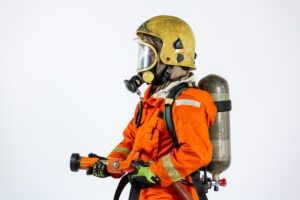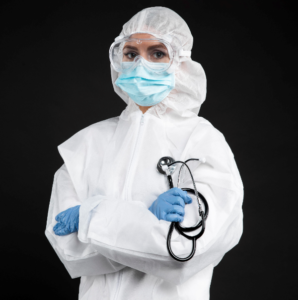In the realm of fabrics, there exists one that reigns supreme in terms of elegance,…

Protective Coveralls: The Unsung Heroes
In a world where safety is paramount, protective coveralls stand as the guardians against potential hazards, offering a shield of security and liberation. But have you considered the untapped potential of these seemingly mundane garments?
Join us in this captivating journey as we explore the unexpected dimensions and extraordinary applications of these heroes, unveiling a world where functionality merges with innovation, and where the ordinary becomes extraordinary.
Armour that defies dangers
In a world teeming with risks and challenges, the importance of safeguarding oneself from potential hazards cannot be overstated. Enter the realm of protective coveralls – a remarkable innovation that stands as a symbol of resilience and safety.
If we look at the history, protective coveralls were a gradual development. Life before them was pretty hazardous. The most famously discussed cases of the past have been that of the miners. They didn’t get enough protection from their everyday dangers and this created chaos in various places of the world.
It is comforting to see that with changing times, the awareness around labor safety and the importance of it has increased. Companies carrying out these tasks are consciously making sure of the safety of their laborers.
What are protective coveralls made of?
Typically, protective coveralls are constructed from a blend of synthetic fabrics that offer inherent resistance to heat, chemicals, and other harmful substances. One such material commonly used is aramid fibers, renowned for their exceptional flame-resistant properties.
Another key component of protective coveralls is polytetrafluoroethylene (PTFE), a synthetic fluoropolymer known for its remarkable resistance to chemicals and liquids. It is often incorporated into the design of coveralls to create a breathable yet impermeable barrier against hazardous substances, including toxic chemicals and biological agents.
Additionally, protective coveralls may feature reinforced panels made from materials like high-density polyethylene (HDPE) or ceramic composites to provide enhanced protection against punctures or impacts in industrial or military settings.
What are the different types of protective coveralls?
There are four main categories in which we can divide the protective coveralls:
Fire resistant
 Workers are protected by these coveralls from possible burns as well as any chemicals that might come into touch with their skin or clothing. For reasons of protection and safety under those specific circumstances, this is highly encouraged. They cannot entirely protect against fire, but they can help a worker escape unharmed.
Workers are protected by these coveralls from possible burns as well as any chemicals that might come into touch with their skin or clothing. For reasons of protection and safety under those specific circumstances, this is highly encouraged. They cannot entirely protect against fire, but they can help a worker escape unharmed.
The outer layer of these coveralls are given chemical treatments that resist the high amount of heat. Various fibres are also blended to make the final product in order to accommodate qualities of each fabric.
Waterproof
This one is also quite self-explanatory to the fire resistant coverall. This is an ideal alternative wherever there is more water. It helps keep the worker dry underneath by protecting against places with high quantities of dampness or water.
The waterproof coverall is a terrific way to stay dry while working in the wettest weather because no one wants to get fully drenched while they are working. These are more accessible than the fire-resistant coverall and can even be utilized in some home maintenance applications when necessary.
One-time use/disposable
 This is an option that doesn’t require storage and is one of the most widely accessible and employed solutions available.
This is an option that doesn’t require storage and is one of the most widely accessible and employed solutions available.
There are no hazardous bacteria or germs inside because it is intended for single use only. It can be applied to most circumstances or places and then immediately thrown away.
This is also one of the solutions that is most easily accessible and reasonably priced. Even better, due to its impeccable hygiene and cleanliness, it has a top safety rating. Disposable coveralls are a wonderful solution for workers who frequently encounter some of the conditions listed above.
We see the use of these coveralls the most in the medical field. Especially through the pandemic that we went through, disposal kits were the only and safest option to be employed.
Electric resistant (Anti static)
Those who work with electric businesses typically wear this one. They can be on the employees who need to climb telephone poles to access the electrical lines. They are also helpful for people who work with electrical grids or panels.
In quite unfortunate cases it has happened that a live wire goes loose and might come in contact with a worker. This can be extremely hazardous to their lives and thus, these coveralls are a standard practice now.
Follow us on LinkedIn for more content.



